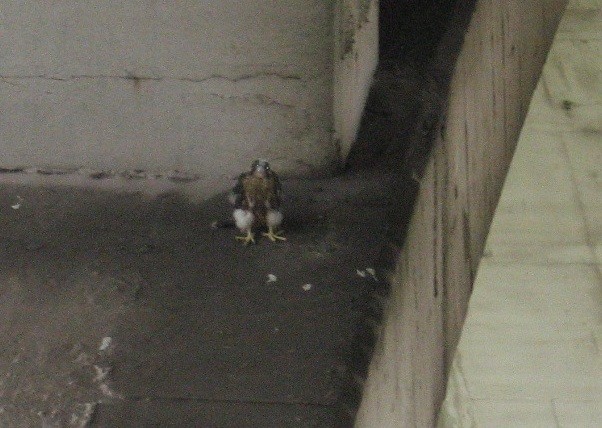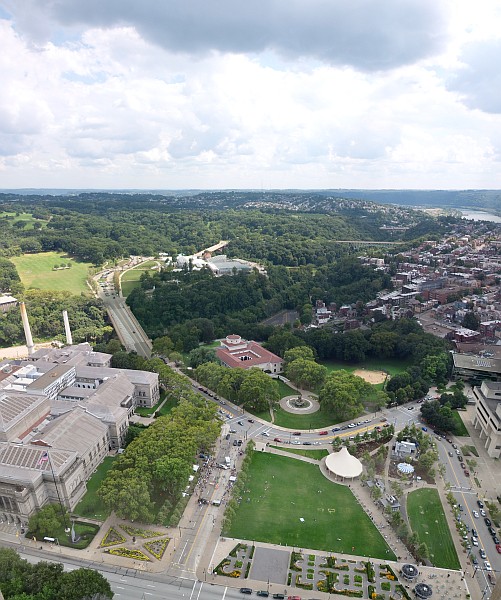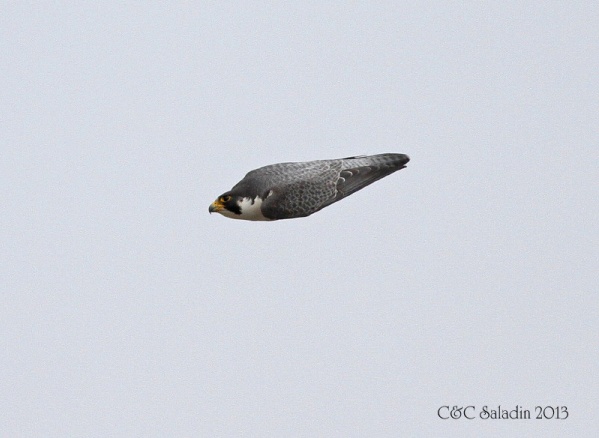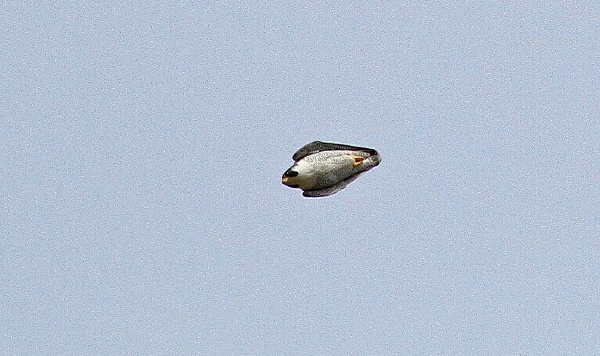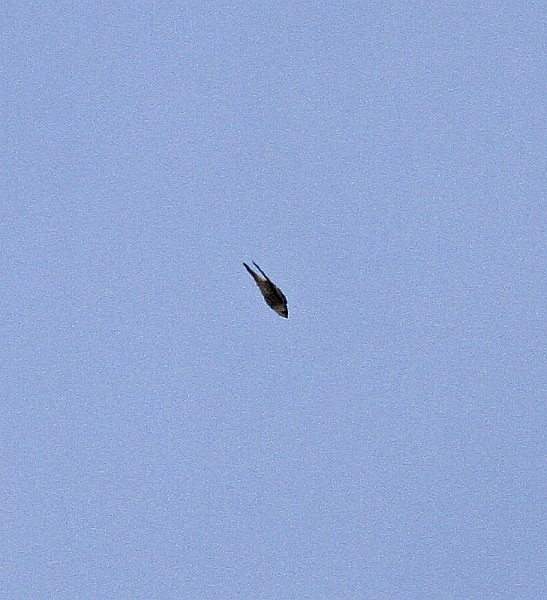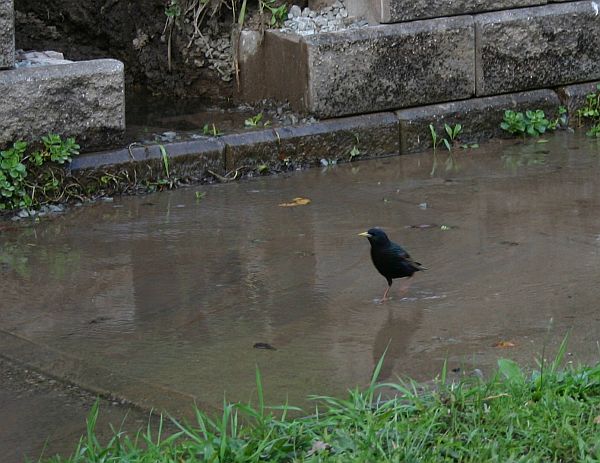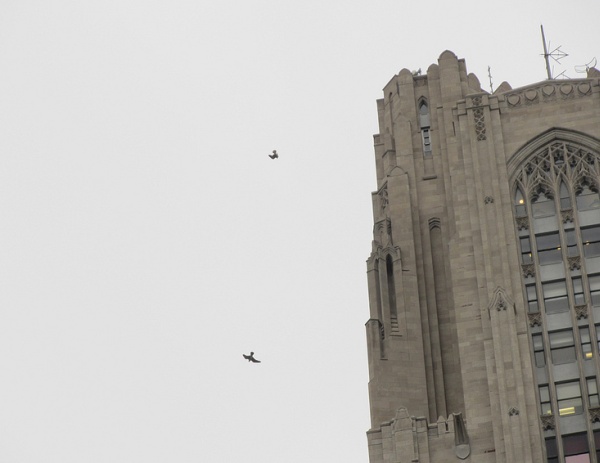
At Pitt: Our youngster is in the “chase me” phase. If he had brothers and sisters he’d be chasing them. Instead he chases his parents who willingly oblige. Above, he dives on Dorothy. Notice the size difference! Female peregrines are larger.
Those of us who watch him from the ground are currently calling him Silver Boy in keeping with the tradition of ID-by-color of the USFW band. (His band has no colored tape; it’s silver.) When we text each other he’s SB, two initials that happen to include all his previous non-names as well.
Downtown: There’s been no news of this family since the week they fledged except for this: Last Friday a dead female juvenile peregrine was found on Grant Street, her body recovered by Beth Fife. This was one of at least two females hatched at the Downtown nest this year. We know there were at least two because one female was rescued on May 30 while another was still unfledged in the nest.
If you have any news from Downtown, please post a comment.
I-79 Neville Island Bridge: These peregrines have been a lot of fun to watch. At 4:00pm yesterday Laura Marshall reported that all three birds had fledged and were staying up high. Then at 7:00pm she and Anne Marie Bosynak were standing in the park-n-ride lot when one of the juvie males flew rapidly across the river from Glenfield and tried to land in the bushy trees near them. This was probably his first encounter with vegetation and he got tangled in the branches. Like any toddler he called for Mom, picked himself up and apparently tried again on another set of bushes. His parents merely watched. Youthful enthusiasm!
Westinghouse Bridge: Fledge Watch begins tomorrow!
Monaca Bridge: Last Friday Becky Smith saw two peregrines flying and swooping with each other at the big black railroad bridge. Their behavior this spring indicates they have young in the nest who may be ready to fly. Stop by the bridge and see if you can spot fledglings.
Tarentum Bridge: Though this nest failed Rob Protz reports that the peregrines are still there. Occasionally he gets a good view of the female.
Green Tree water tank: This nest failed as well but Mary Jo Peden and Shannon Thompson report that one or both peregrines are visible nearly every time they stop by. I stopped by on Sunday and saw the female.
Our peregrines are off camera now but they’re really busy. Check them out at any of these locations.
(photo by Peter Bell)

